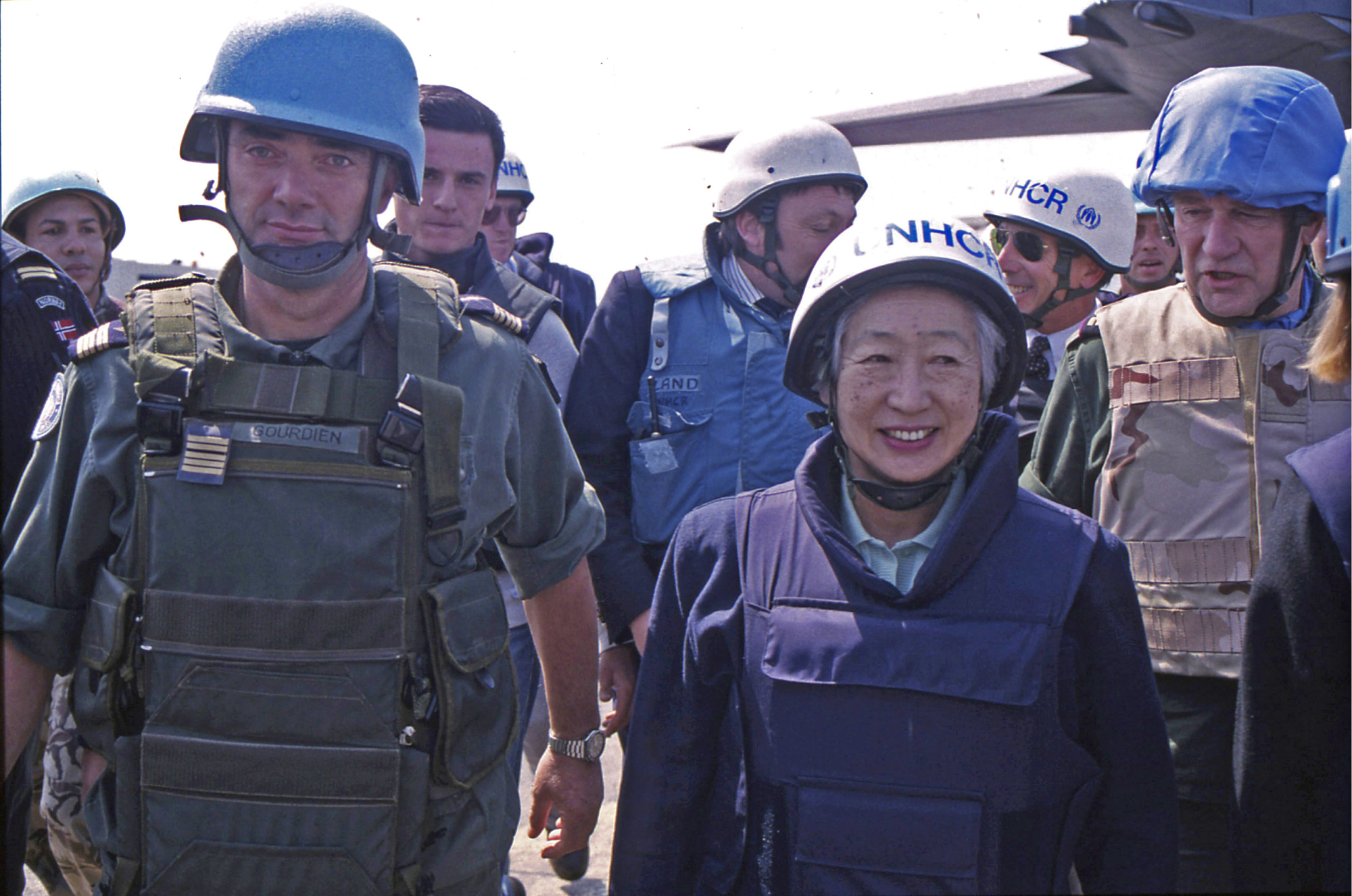This is the third in a 10-part series on influential figures in the Heisei Era, which began in 1989 and will end when Emperor Akihito abdicates in April. In Heisei, Japan was roiled by economic excess and stagnation, as well as a struggle for political and social reform. This series explores those who left their imprint along the way.
A 1993 photograph of a diminutive, sexagenarian woman surveying the front lines of conflict has left an indelible mark on the international community as a true example of commitment to humanitarian aid.
The woman was Sadako Ogata, a scholar and mother of two, who in 1991 was appointed the first female United Nations High Commissioner for Refugees. It coincided with the end of the Cold War — just two years after Japan began the Heisei Era.

















With your current subscription plan you can comment on stories. However, before writing your first comment, please create a display name in the Profile section of your subscriber account page.